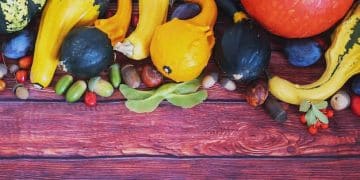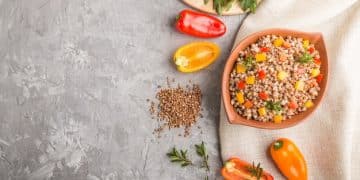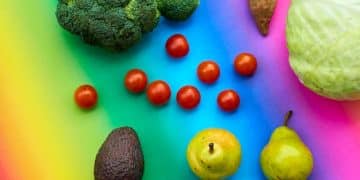Hydration Hacks: Simple Ways to Drink More Water
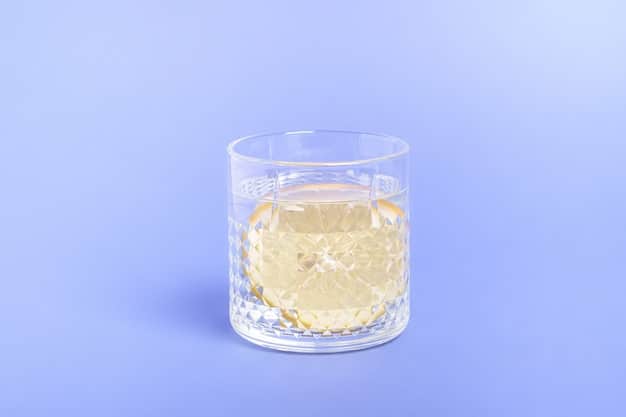
Hydration hacks are simple and effective strategies to increase your daily water intake, supporting overall health and well-being by ensuring your body functions optimally.
Staying adequately hydrated is crucial for maintaining optimal health, but sometimes, drinking enough water can feel like a chore. That’s where hydration hacks come in – simple, effective strategies to help you effortlessly increase your daily water intake and stay healthy.
Understanding the Importance of Hydration
Water is essential for virtually every bodily function, from regulating temperature to transporting nutrients. Understanding why hydration matters is the first step in making it a priority.
Adequate hydration supports:
- Cognitive Function: Even mild dehydration can impair concentration, memory, and mood.
- Physical Performance: Water helps lubricate joints, transport oxygen to muscles, and regulate body temperature during exercise.
- Digestive Health: Hydration is crucial for preventing constipation and promoting healthy digestion.
- Kidney Function: Water helps flush out waste products and prevents kidney stones.
- Skin Health: Proper hydration keeps skin supple and radiant.
Without enough water, your body struggles to perform these vital functions, leading to fatigue, headaches, and other health issues. So, how can you make hydration an easy and enjoyable part of your daily routine? Keep reading to discover practical and effective hydration hacks.
Simple Hydration Hacks to Increase Water Intake
Making hydration an effortless part of your daily routine doesn’t require drastic changes. These simple hydration hacks can seamlessly fit into your existing lifestyle.
Carry a Reusable Water Bottle
Having a water bottle with you at all times serves as a constant reminder to drink. Choose a bottle that you love, whether it’s stainless steel, glass, or BPA-free plastic, and keep it filled throughout the day.
Set Reminders
Use your phone or a hydration app to set reminders to drink water at regular intervals. This is especially helpful if you tend to get caught up in your work or other activities and forget to hydrate.
Other tips for staying hydrated include:
- Drink a Glass Upon Waking: Start your day with a refreshing glass of water to kickstart your metabolism and rehydrate after sleep.
- Hydrate Before Meals: Drinking water before a meal can help you feel fuller, potentially aiding in weight management.
- Infuse Your Water: Add slices of fruits, vegetables, or herbs to your water to make it more flavorful and appealing.
By incorporating these small habits into your daily life, you can significantly increase your water intake without feeling overwhelmed. Remember, consistency is key – even small changes can lead to big results over time.
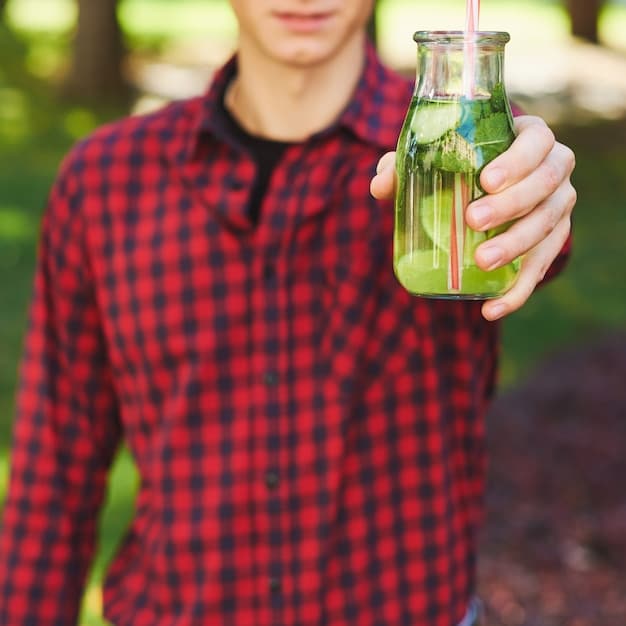
Make it a Habit: Integrating Water into Your Daily Routine
Turning hydration into a habit requires integrating it into your existing daily routine. This means finding ways to consistently remind yourself to drink water and make it easily accessible.
Incorporate water into your routine with strategies like:
Pairing it with Daily Activities
Associate drinking water with activities you already do regularly, such as checking emails, commuting, or taking breaks from work. For instance, drink a glass of water every time you check your email or finish a task.
Having Water Visible at All Times
Keep a glass or bottle of water on your desk, in your car, or wherever you spend most of your time. Seeing it will prompt you to drink more frequently.
For example:
- Keep a pitcher of water on your desk: Fill it up every morning and aim to finish it by the end of the workday.
- Store bottles of water in your car: Stay hydrated while commuting or running errands.
- Place a glass of water by your bedside: Drink it before going to sleep and as soon as you wake up.
By linking hydration with your regular activities and ensuring water is always in sight, you can transform it from a chore into a seamless habit. The more integrated it becomes, the easier it will be to maintain.
The Flavor Factor: Making Hydration Enjoyable
One of the biggest barriers to drinking enough water is often the lack of flavor. Many people find plain water boring, which can make it difficult to reach their hydration goals.
To overcome this, it’s important to make hydration enjoyable and flavorful. Consider these flavor enhancers:
Infused Water Recipes
Infusing water with fruits, vegetables, and herbs can add a refreshing twist. Some popular combinations include cucumber and mint, lemon and ginger, or strawberry and basil. Simply add your chosen ingredients to a pitcher of water and let it infuse for a few hours in the refrigerator.
Natural Sweeteners and Flavors
If you prefer a sweeter taste, consider adding a small amount of natural sweetener like honey or stevia to your water. You can also use fruit juice, such as a splash of cranberry or pomegranate juice, for added flavor and antioxidants.
Other flavorful tips include:
- Herbal Teas: Brew a pitcher of herbal tea, such as chamomile or peppermint, and let it cool. This is a great alternative to plain water, especially during colder months.
- Sparkling Water: If you enjoy bubbles, sparkling water can be a refreshing option. Add a squeeze of lemon or lime for extra flavor.
- Electrolyte Powders: For those who engage in intense physical activity, electrolyte powders can help replenish fluids and essential minerals.
Experiment with different flavors and combinations to find what you enjoy most. By making hydration a delicious experience, you’ll be more likely to drink enough water throughout the day.
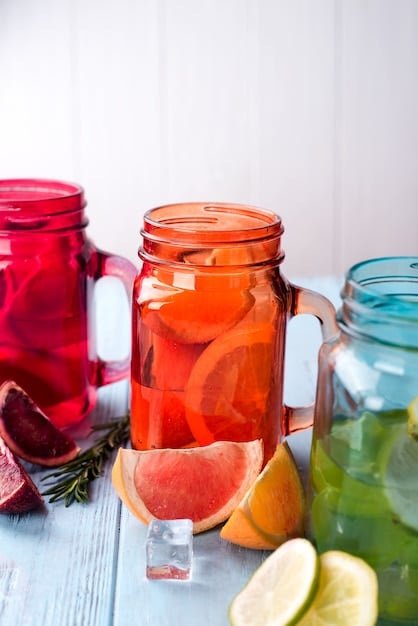
Recognizing Dehydration: Listen to Your Body’s Signals
It’s crucial to recognize the signs of dehydration, as your body will often give you clues that it needs more fluids. Paying attention to these signals can help you stay proactive about hydration.
Common Symptoms of Dehydration
Typical symptoms of dehydration include:
- Thirst: This is the most obvious sign that your body needs water.
- Headaches: Dehydration can cause headaches due to reduced blood flow to the brain.
- Fatigue: Lack of water can lead to decreased energy levels and feelings of tiredness.
- Dizziness: Dehydration can cause lightheadedness and dizziness, especially when standing up quickly.
- Dark Urine: The color of your urine is a good indicator of hydration levels. Dark urine suggests you need to drink more water.
When to Seek Medical Attention
In severe cases, dehydration can lead to more serious symptoms that require medical attention. Seek immediate medical help if you experience:
- Confusion: Severe dehydration can impair cognitive function and cause confusion.
- Rapid Heartbeat: Dehydration can strain the cardiovascular system, leading to a rapid or irregular heartbeat.
- Lack of Sweating: If you stop sweating despite physical exertion or hot weather, it could be a sign of severe dehydration.
Being aware of these symptoms and taking prompt action can prevent dehydration from escalating into a more serious condition. Always listen to your body and prioritize hydration, especially during hot weather or intense physical activity.
Hydration for Specific Needs: Activity Levels and Climate
Hydration needs can vary significantly based on individual factors such as activity levels and climate. Understanding these variables can help you tailor your hydration strategies to meet your specific requirements.
Hydration During Exercise
During physical activity, your body loses fluids through sweat. To maintain optimal performance and prevent dehydration, it’s important to drink water before, during, and after exercise.
Adjusting for Different Climates
Hot weather and high altitude can increase your risk of dehydration. When exercising in hot weather, drink more water than usual and consider adding electrolyte drinks to replace lost minerals, or if you plan to exercise at high altitude make sure to be even more adamant about your water intake.
Here are some tips:
- Choose the right materials: Choosing light airy materials when exercising in hot weather can help keep your body temperature stable.
- Drink regularly: Don’t wait until you’re thirsty to drink water. Take small sips throughout your workout.
- Replace electrolytes: Electrolyte drinks can help replenish minerals lost through sweat, such as sodium, potassium, and magnesium.
By adjusting your hydration strategies based on your activity levels and climate, you can ensure you stay properly hydrated and maintain optimal health.
Debunking Common Hydration Myths
Many misconceptions surround hydration, leading to confusion about the best ways to stay hydrated. Let’s debunk some common myths to provide clarity and ensure you’re making informed choices.
Myth: You Can Only Hydrate with Water
While water is an excellent source of hydration, many other beverages and foods can contribute to your daily fluid intake. Fruits and vegetables with high water content, such as watermelon and cucumbers, are hydrating options. Additionally, beverages like herbal teas and coconut water can also help you stay hydrated.
Myth: Thirst is a Reliable Indicator of Hydration
Waiting until you feel thirsty to drink water means you’re already mildly dehydrated. Thirst is a late indicator of hydration, so it’s essential to drink water regularly throughout the day, even when you don’t feel thirsty. Relying solely on thirst can lead to chronic dehydration and associated health issues.
Other common myths include:
- You need eight glasses of water a day: While this is a good general guideline, individual hydration needs vary based on factors like activity level, climate, and overall health.
- Sports drinks are always better than water: Sports drinks are beneficial for intense physical activity but are not necessary for everyday hydration.
- Caffeinated drinks don’t count: While caffeine has a mild diuretic effect, caffeinated beverages can still contribute to your overall fluid intake.
By understanding and debunking these common myths, you can make more informed decisions about your hydration habits and ensure you’re staying adequately hydrated for optimal health.
| Key Point | Brief Description |
|---|---|
| 💧Reusable Bottle | Carry a water bottle to remind you to hydrate regularly. |
| ⏰ Set Reminders | Use alarms to prompt water breaks and maintain hydration. |
| 🌿 Infuse Water | Add fruits or herbs to make water more appealing and flavorful. |
| 🏃♀️Adjust for Activity | Increase water intake based on exercise and climate conditions. |
Frequently Asked Questions
▼
The standard recommendation is around eight glasses (64 ounces), but individual needs vary. Consider factors like activity level, climate, and overall health.
▼
Common signs include thirst, headaches, fatigue, dizziness, and dark urine. Pay attention to your body and drink water regularly, especially if you notice these symptoms.
▼
Yes, other beverages like herbal teas, coconut water, and even some juices can contribute, but water should be your primary source of hydration due to its purity.
▼
Sports drinks are beneficial during intense physical activity to replace electrolytes. For everyday hydration, water is generally sufficient and healthier due to lower sugar content.
▼
Infuse your water with fruits, vegetables, or herbs like cucumber, lemon, or mint to add flavor. You can also try sparkling water or herbal teas as refreshing alternatives.
Conclusion
Incorporating hydration hacks into your daily life can significantly improve your overall health and well-being. By making small, consistent changes, such as carrying a reusable water bottle, setting reminders, and adding flavor to your water, you can easily increase your daily water intake and stay adequately hydrated.
